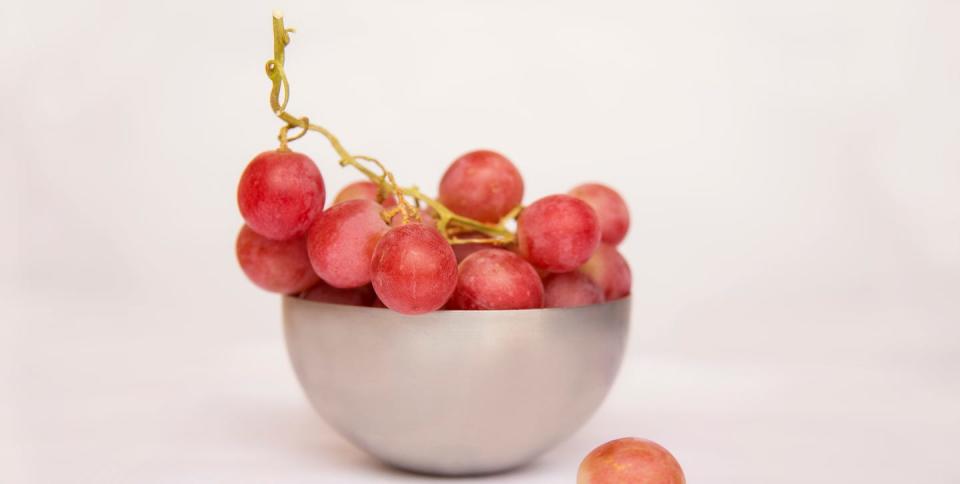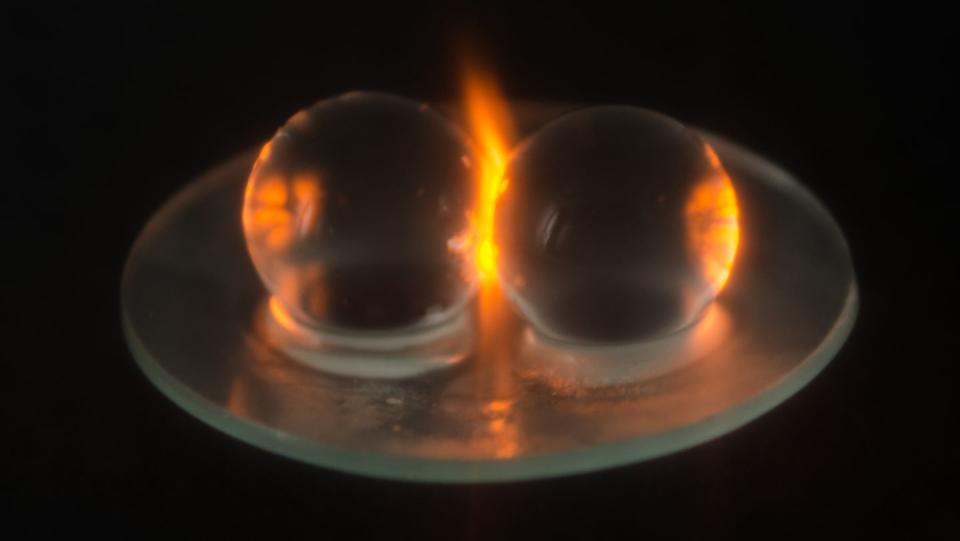Here's Why Grapes Turn into Little Fireballs When You Microwave Them

• Ever see those YouTube videos where a grape explodes in a microwave? Physicist Aaron Slepkov did.
• His team set out to figure out the true reason for the plasma fire phenomenon by testing not only grapes but also other round items like cherries and quail eggs.
• It turns out that round, water-based items like grapes amplify the power of microwaves to create a hot spot.
Who knows the reasons a scientist may have for choosing the question that will shape his life’s work. Maybe, when pondering life’s great mysteries, he prefers the guidance of physics to that of religion. Maybe he has always dreamed of circling the Earth in the International Space Station, watching the sun rise every 90 minutes over the soapy blue of his home planet. Maybe he accidentally put a fork in a microwave one time. Or maybe it was the microwave thing, but with a grape.
“In 1995, [Trent University physicist Aaron Slepkov] had found the first website describing making plasma in a microwave, and he got really fascinated with it and kept it in the back of his mind,” coauthor Pablo Bianucci told me when I called to ask about a paper he, Slepkov, and an undergraduate student named Hamza Khattak authored that is out this week in the Proceedings of the National Academy of Sciences of the United States of America.

The young Slepkov had discovered the old grape-in-the microwave trick, in which a sliced grape erupts into a fireball of plasma, an ionized gas that is considered the fourth state of matter and is present in large quantities in, among other places, the sun. Twenty years later, Slepkov, now a physics professor, took on his own experiment to explain how the phenomenon worked.
First off: the rules. From a thorough inspection of the internet’s best "microwaved grape fireball" videos, it seemed to be necessary to cut the grape in half before microwaving, leaving a small, ion-rich skin bridge between the two hemispheres. “The more or less consensus explanation was that the grape would work as an antenna and that would create a current through the skin bridge that would eventually heat it up and create the plasma,” says Bianucci.
Through the sacrifice of untold masses of grapes (and 12 microwaves), the researchers showed that this hypothesis - which had never been explained mathematically anyway -was false. Not only is a skin bridge between the grape halves not required, but you can ignite a plasma fireball in two whole grapes placed side by side in a small bowl, or two ground cherries, two quail eggs, or even two hydrogel beads of the type used in diapers.
Using microwaves with the doors removed, “they managed to decouple the generation of the plasma - the really flashy thing you see - from the actual phenomenon that’s going on underneath, which is the focusing of the electromagnetic radiation, the microwaves, in between the two spheres,” Bianucci says. The paper explains how this works over six pages of sentences I do not understand, but the upshot is that water-based orbs about the size of a grape amplify microwaves (which is electromagnetic energy, just like light) so effectively that a hot spot just between the two orbs creates plasma.
Apart from being, you know, cool, Slepkov, Khattak, and Bianucci’s research may someday contribute to better understanding of a field called nanoplasmonics. “If you put, for instance, two metal nanoparticles next to each other, you have this same effect, a really increased electromagnetic field, but with the metals you see it with light instead of microwaves,” says Bianucci. “The key thing is that the water has a high reflective index, so it shrinks the wavelength a lot. If we were able to find a material that works like water, but for light, where we could really shrink the wavelength of light, then we could probably use it to focus light into very, very small spaces.”
Until then, you can file it under Fruit-Based Physics Questions That Got Much More Serious Than We Expected, a category that includes such inquiries as “What Would Happen If The Entire Earth Were Made of Blueberries?”
('You Might Also Like',)

